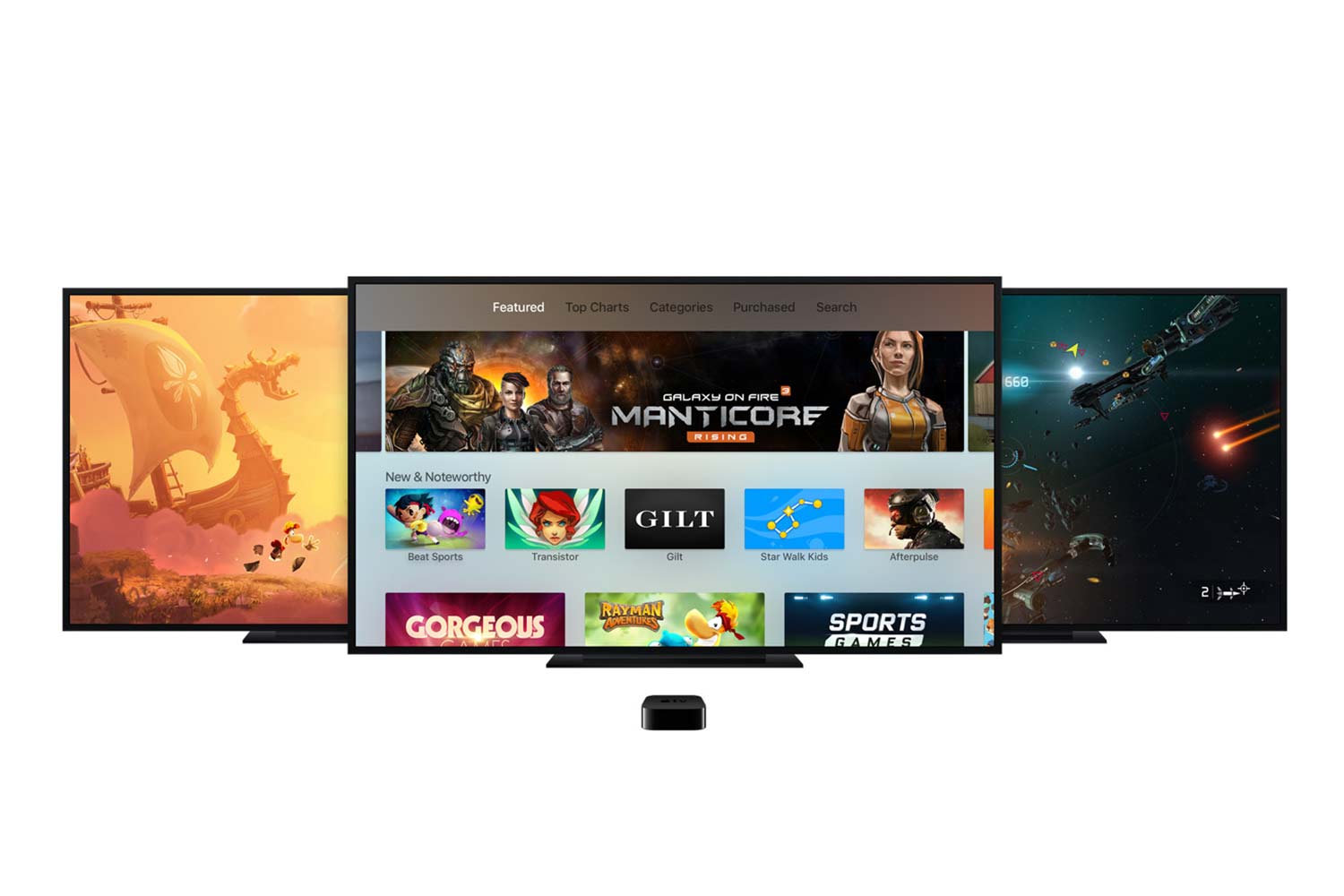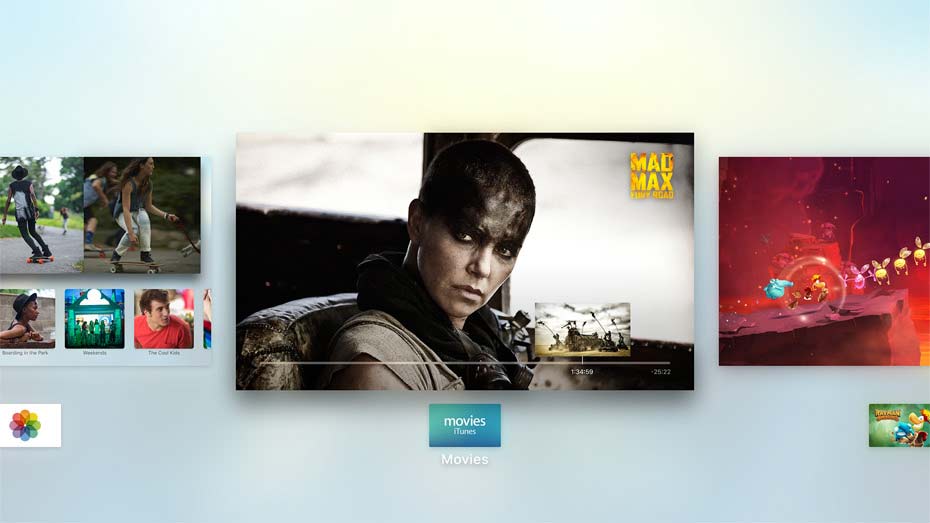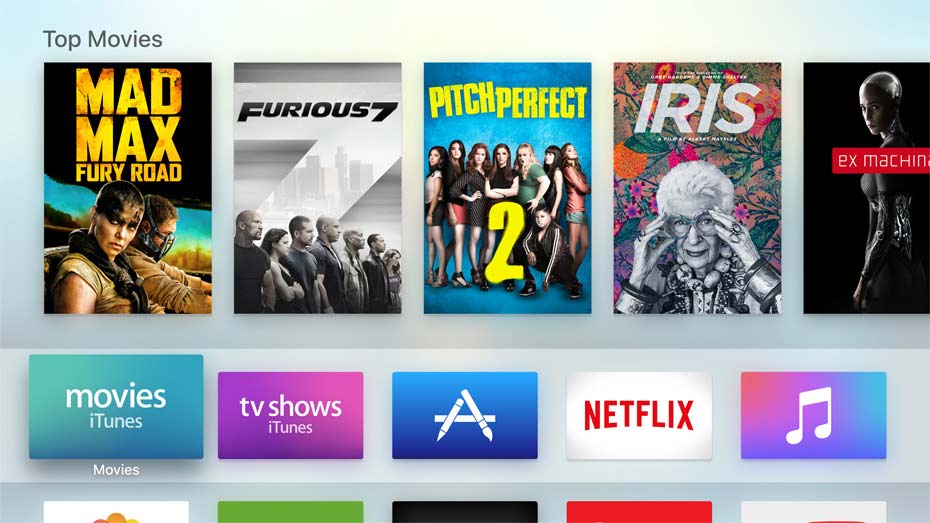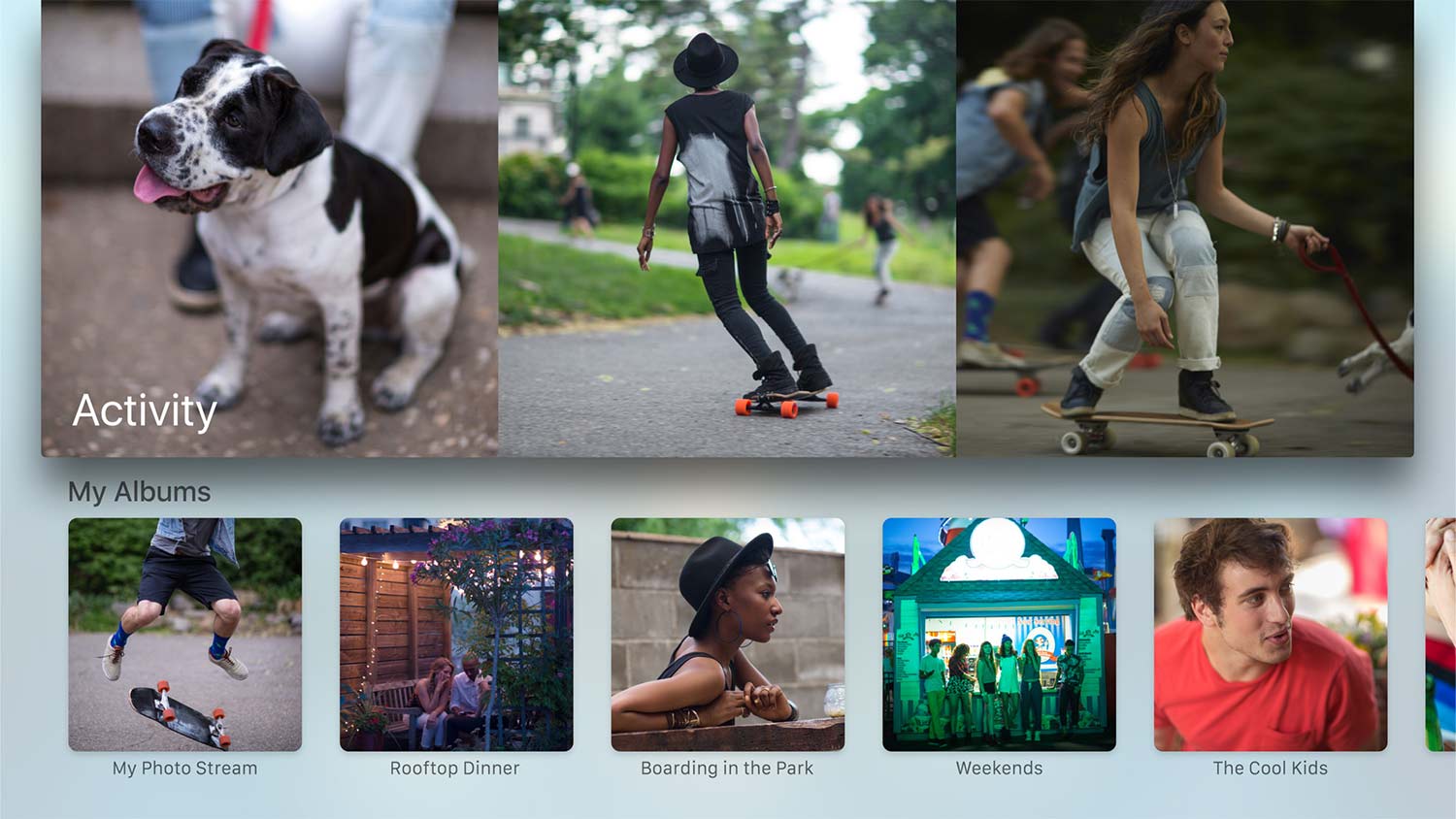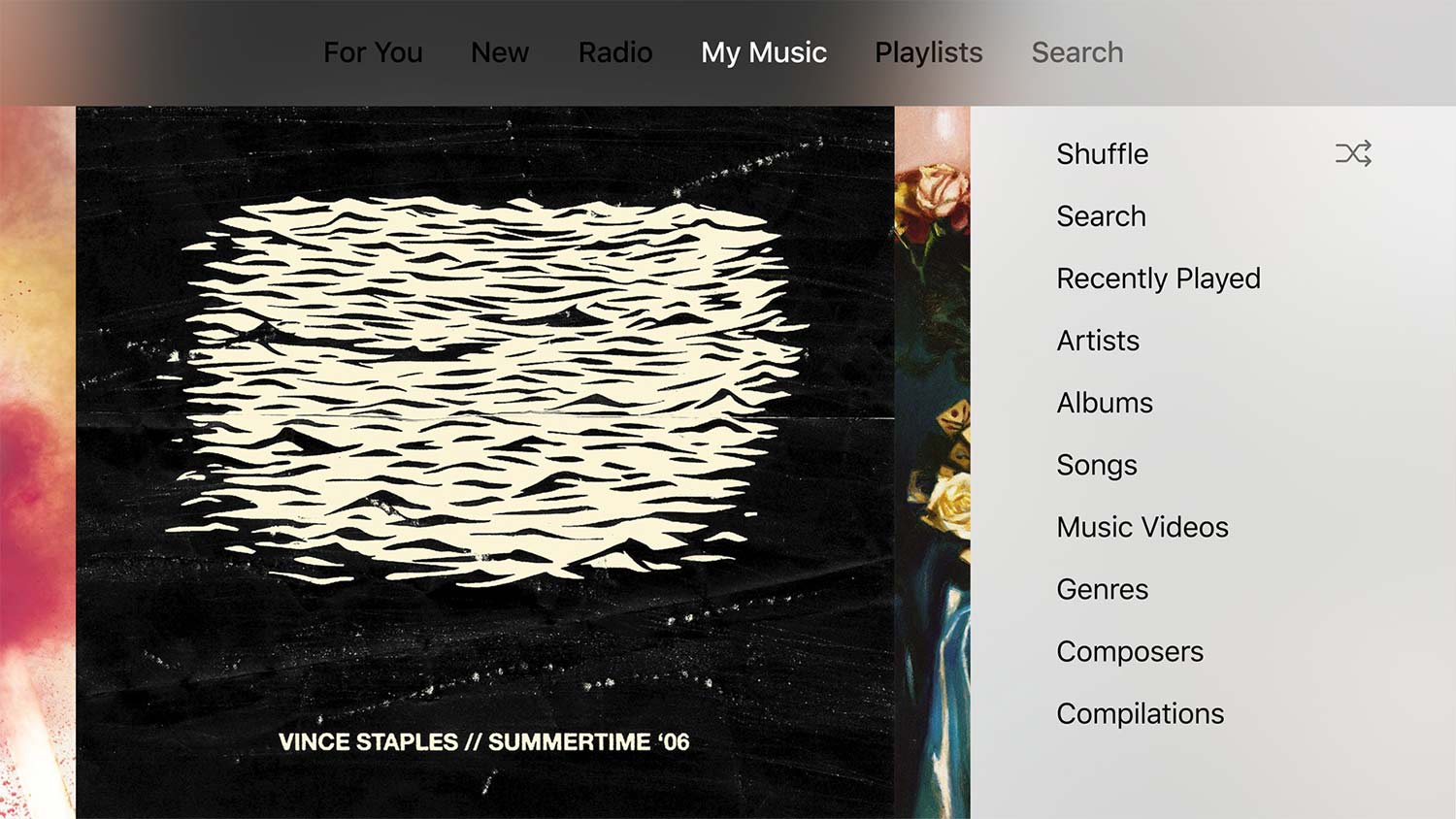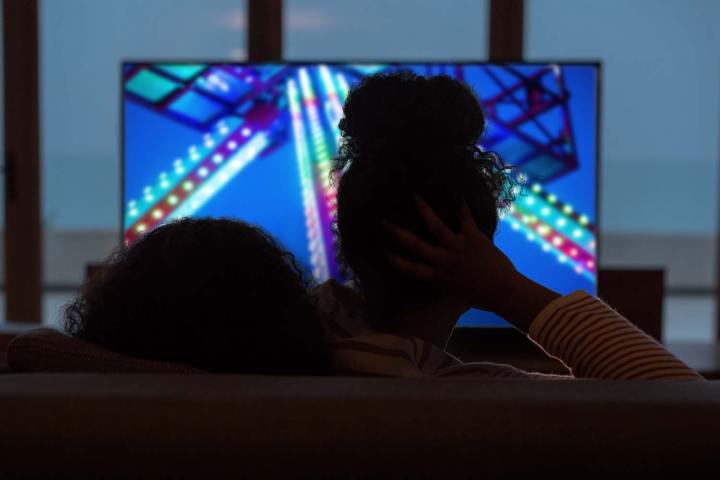
It’s been a long wait for the new Apple TV to arrive (two and a half years to be exact), and a lot longer since Jobs first uttered those words. But, from what we saw at Apple’s special event in San Francisco, the shiny new box that Apple debuted today appears to come tantalizingly close to realizing his dream.
The touch, the feel of Apple
When it comes to the user experience, Apple’s iPhone and iPad have created an intimacy between user and content that makes navigation second nature. We slide, touch, and expand our fingers along smooth glass, and the device reacts in kind. But that experience hasn’t translated to the largest screen in the house. The new Apple TV aims to do just that, starting with the remote.

With a thumb-operated touch pad up top and scarce buttons, the new remote presents a design that’s forehead-slappingly simple. It uses Bluetooth 4.0 so you don’t need line-of-sight, offers a Lightning connection with a rechargeable battery that runs up to 3 months per charge, and will control A/V receivers and other devices over CEC (consumer electronics communication). The device also doubles as a gaming controller, and multi-player games will let users connect with an iPhone or iPod touch — no Androids allowed for now.
The box runs tvOS, a new operating system closely related to iOS 9, allowing for cross-platform development. That shared blood means you can do things like start a game on your phone and finish it at home. More noticeably, the interface has been cleaned up with sleek 3D-style icons that allow you to move them around with your thumb, a broad search screen that will tell you where to find content, and gorgeous screensavers with HD video.
More powerful, and more capable search … for iTunes anyway
Aside from the futuristic, pie-in-the-sky TV experience Jobs always wanted, the Apple TV needed some decent voice-automated search just to keep up with rivals like Roku 3 and the Amazon Fire TV — Siri to the rescue! For now, the voice attendant is integrated into Netflix, Hulu, HBO, and of course, iTunes.
Apple’s grand vision of the future relies on your total immersion in the Apple universe.
During the presentation we saw Siri do some pretty cool things, not the least of which was backing up 15 seconds and temporarily turning on captions when the presenter asked “Siri, what did she say?” Siri also pulled off other tricks like finding the moment when Edward Norton shows up in a Modern Family episode. Siri can also find just the newest family movies, for instance, or dig deep into subsections to search by director, date, cast, and even age rating. The device’s new A8 processor seemed to make that process extremely quick, though we’ll have to wait to see if the $150 Apple TV can smoke streaming peers that run just $100
Siri support will quickly and easily navigate to the most minute of choices available on iTunes, if it works as flawlessly as it did on stage. But what about third-party apps? We doubt an Amazon app will allow for such powerful search parameters across platforms, for instance, but we can imagine Netflix bowing to Apple’s developers, which could offer a luxurious way to get through Big Red’s massive vault of content. Unfortunately, for now we just don’t know how well Siri search will work outside of iTunes.
Apps, apps, and more apps
“The Future of TV is apps,” Tim Cook said as the Apple TV presentation began. To that end, Apple put tvOS in the hands of 11 million developers, and we expect to see some impressive new efforts that will help close the gap between your mobile devices and your big screen at home, creating a singular entertainment experience.
The new Major League Baseball app from MLB.com makes an impressive first step. It offers a host of live games streaming at 60 frames per second in HD — if you’ve ponied up the $130 yearly subscription fee, that is. The system showed just how impressive streaming live sports could be, allowing users to call up games, go dual-screen, and even check out stats, all with the swipe of a thumb.
The appearance of Apple Music is another stride toward Jobs’ vision. When the new service premiered last June, it offered an unprecedented level of integration for users who bought in, allowing you to upload every song you’ve ever collected, burned, or downloaded to sit side by side with music on your phone or tablet, and 30 million songs on demand. Now that Apple Music is on the Apple TV, the system has come full circle, allowing you to access all of your music in the cloud, without the need for AirPlay, hard drives, or even your iPhone.
Like everything else Apple makes, however, Apple’s grand vision of the future relies on your total immersion in the Apple universe. As long as you don’t deviate from that little Apple icon, all of your devices can now sync effortlessly together, putting your music, streaming media, and mobile video games in a single, infinite loop that follows you everywhere.
The elephant in San Francisco
Despite new features, cross-platform apps, and an Apple-intuitive interface, there’s still one thing missing to fulfill Jobs’ vision: live TV. Apple may believe that the future of TV is apps, but until those apps contain live sports, local broadcasts, news, and other events, viewers will still demand broadcasts, and Apple TV doesn’t touch them.
There’s still one thing missing to fulfill Jobs’ vision: live TV.
It’s well known that Apple has been working on its own Internet TV service to deliver just that for some time now. Back in 2014, Apple attempted to forge a partnership with Comcast to make the new service a reality, but that partnership quickly folded, and Apple has gone it alone from there.
But shaking hands with thousands of affiliates is an unprecedented mess of a project. Some reports also suggest that several networks are playing hardball on price: Apple wants to offer its new service for $40 a month, and the networks want more revenue.
At any rate, the service is expected to be pushed back to 2016.
Considering the new iPhone shoots 4K video, it also seems like a notable omission that the new Apple TV doesn’t stream 4K content. That said, it’s probably a savvy move by Apple —
All told, Apple’s new device is an enticing new addition to the field. We’ll have to wait until we get our hands on one, but the device should stack up well with flagship devices from Roku and Amazon, and hopefully best them. Moreover, the new Apple TV is achingly close to accomplishing Steve Jobs’ ultimate vision. Perhaps the next generation will finally turn that page.
